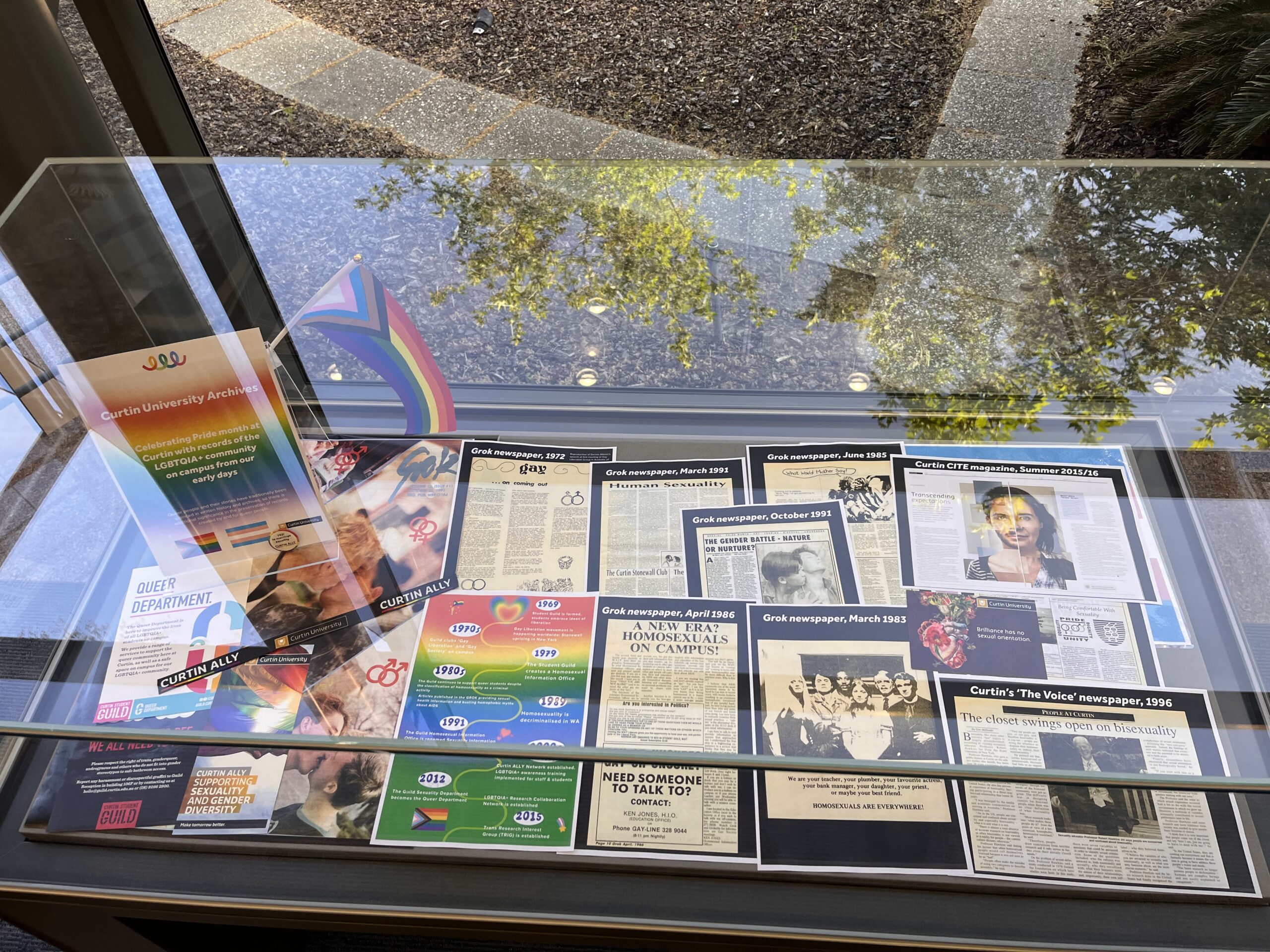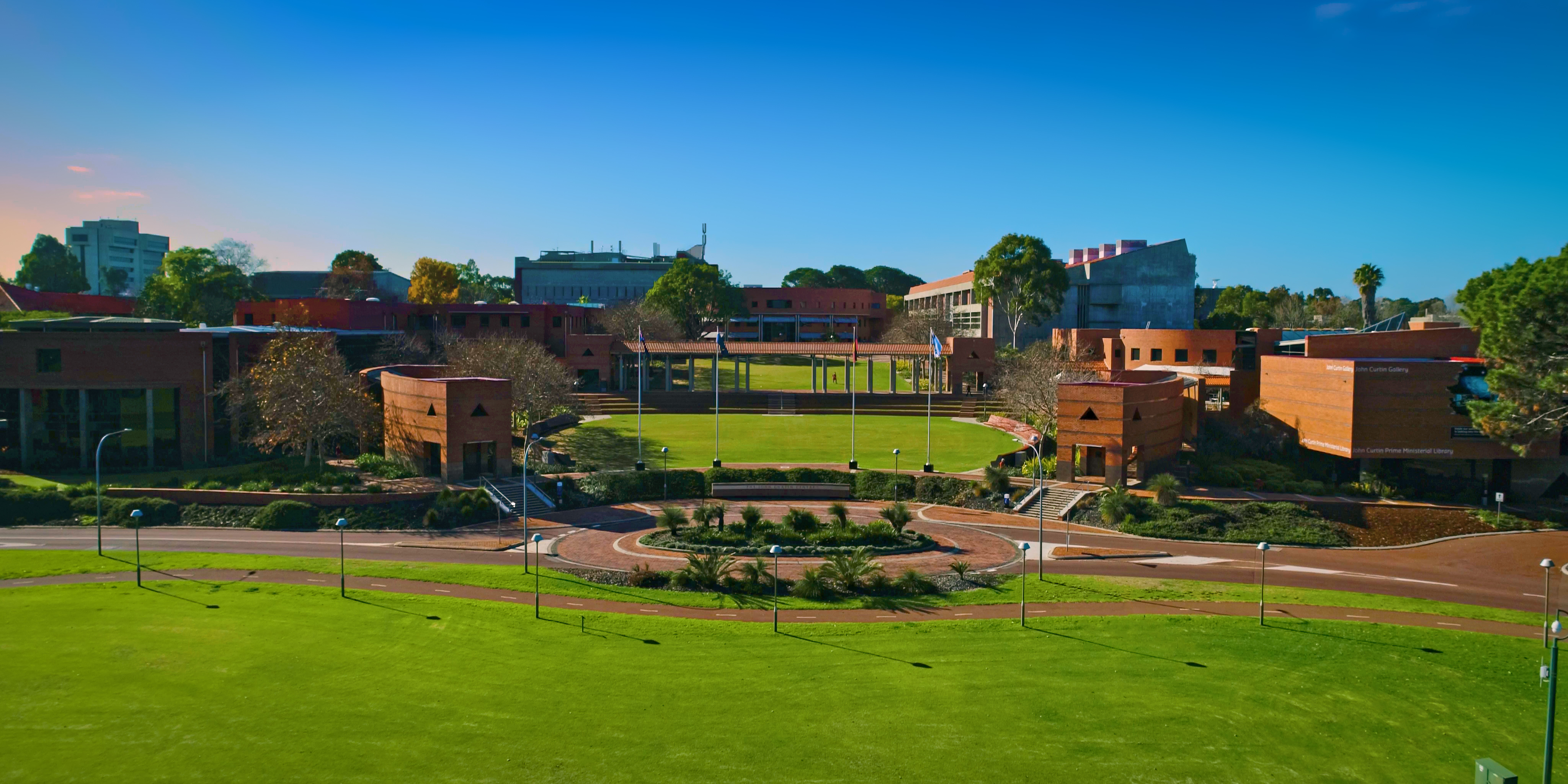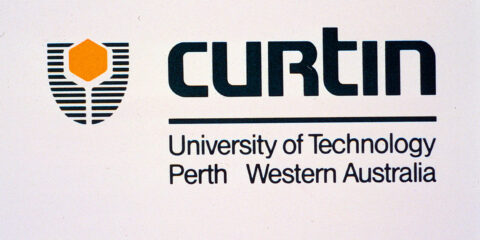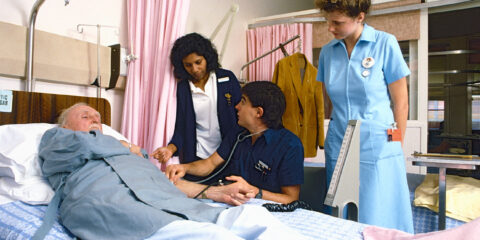Celebrating Pride: LGBTQIA+ community at Curtin
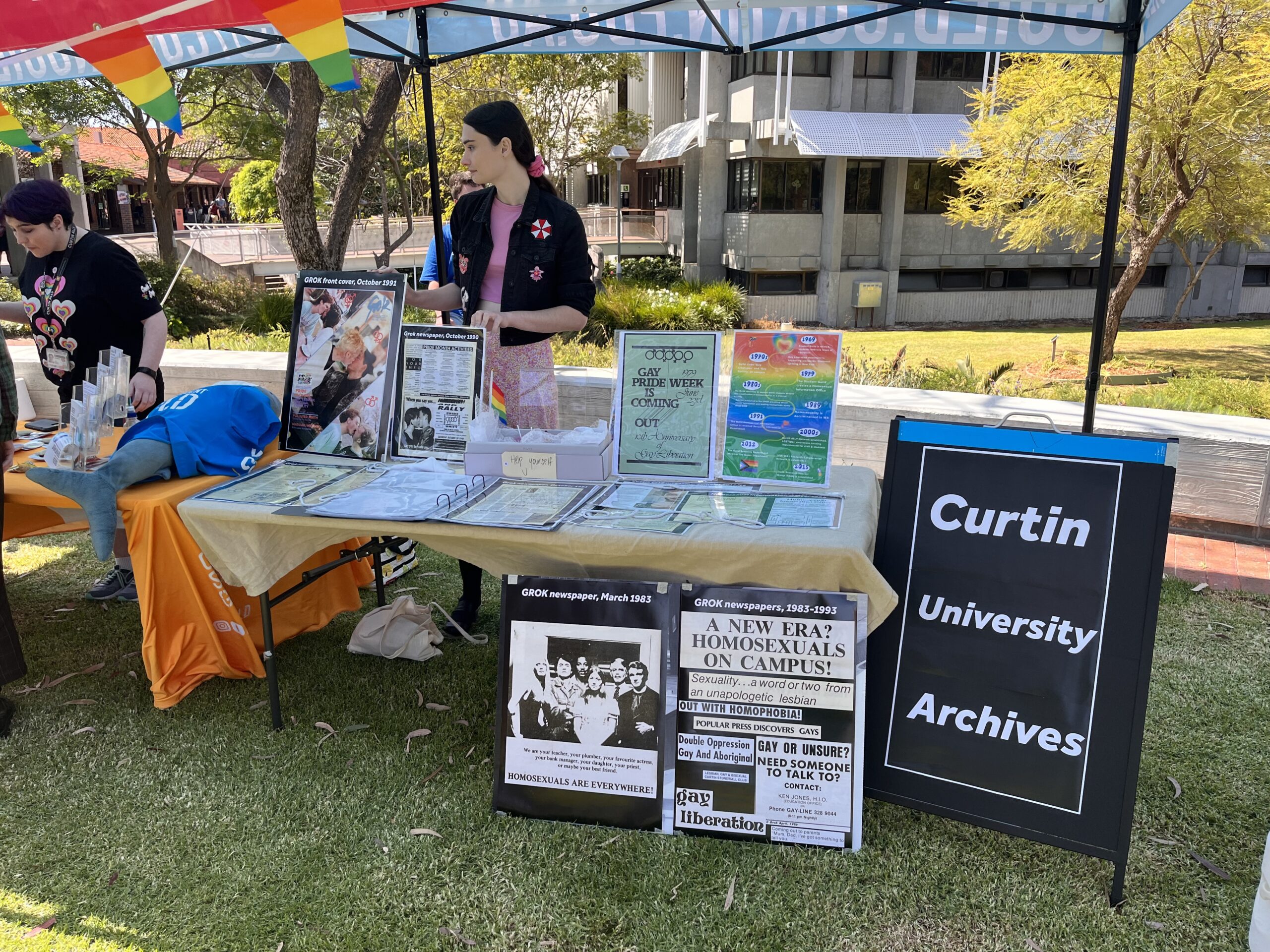
We are celebrating Pride Month with records of the LGBTQIA+ community on campus from our early days. Queer people and their stories have traditionally been left out of written history and archives, so there is additional significance when it comes to the preservation of records created by and for queer people.
The Archives celebrated at the on-campus Pride event with the Queer Department on Wednesday 11 October with a stall of visual material from the Archives to show students & staff the LGBTQIA+ history on campus.
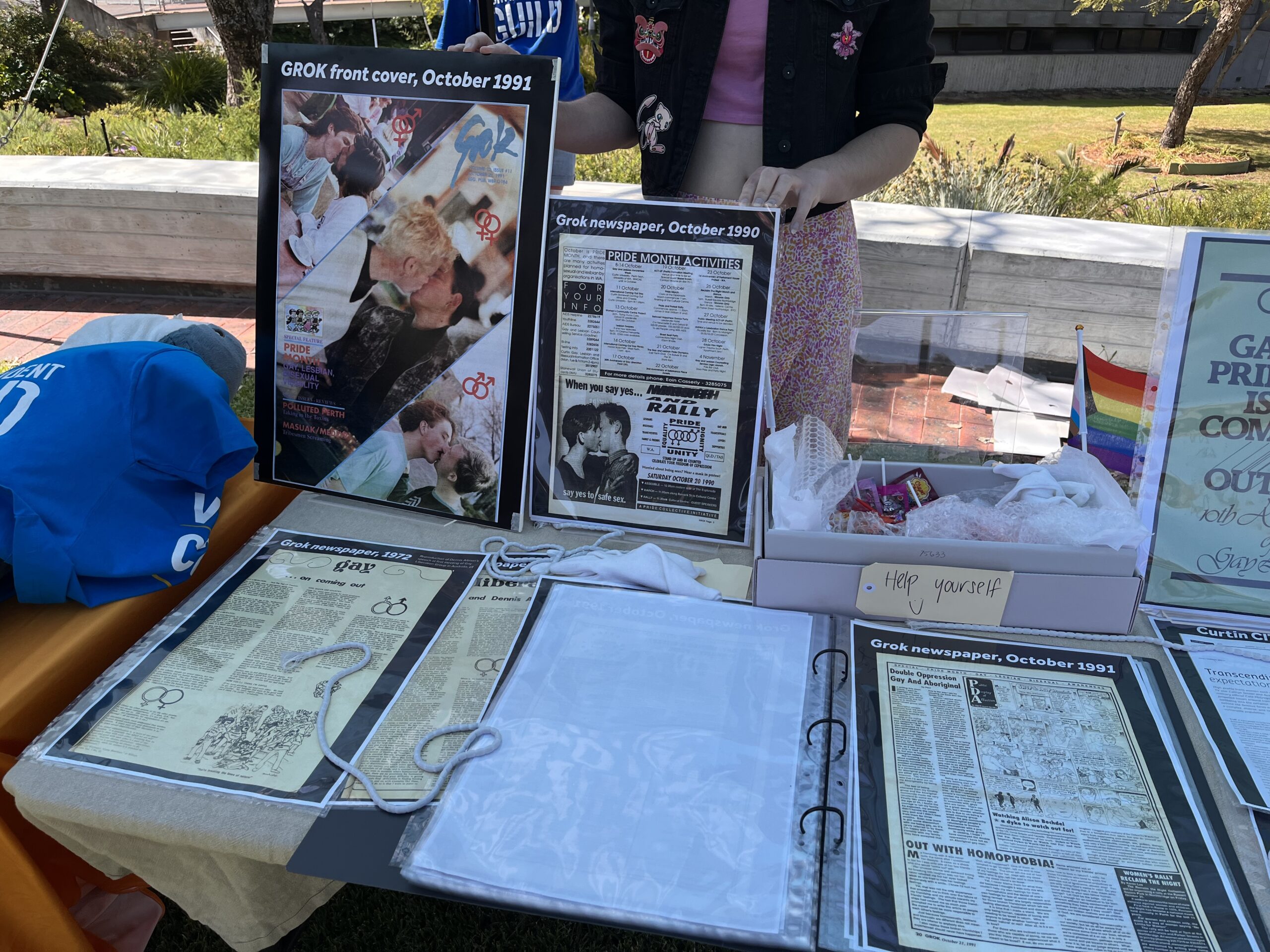
The earliest and most prominent records are from the students themselves. Articles written in the Guild student newspaper GROK show us the changing mindset and attitudes towards homosexuality during the 1970s onwards. The earliest is a reproduction of gay Australian activist Dennis Altman’s speech at the first Gay Liberation Group meeting in Sydney, 1972.
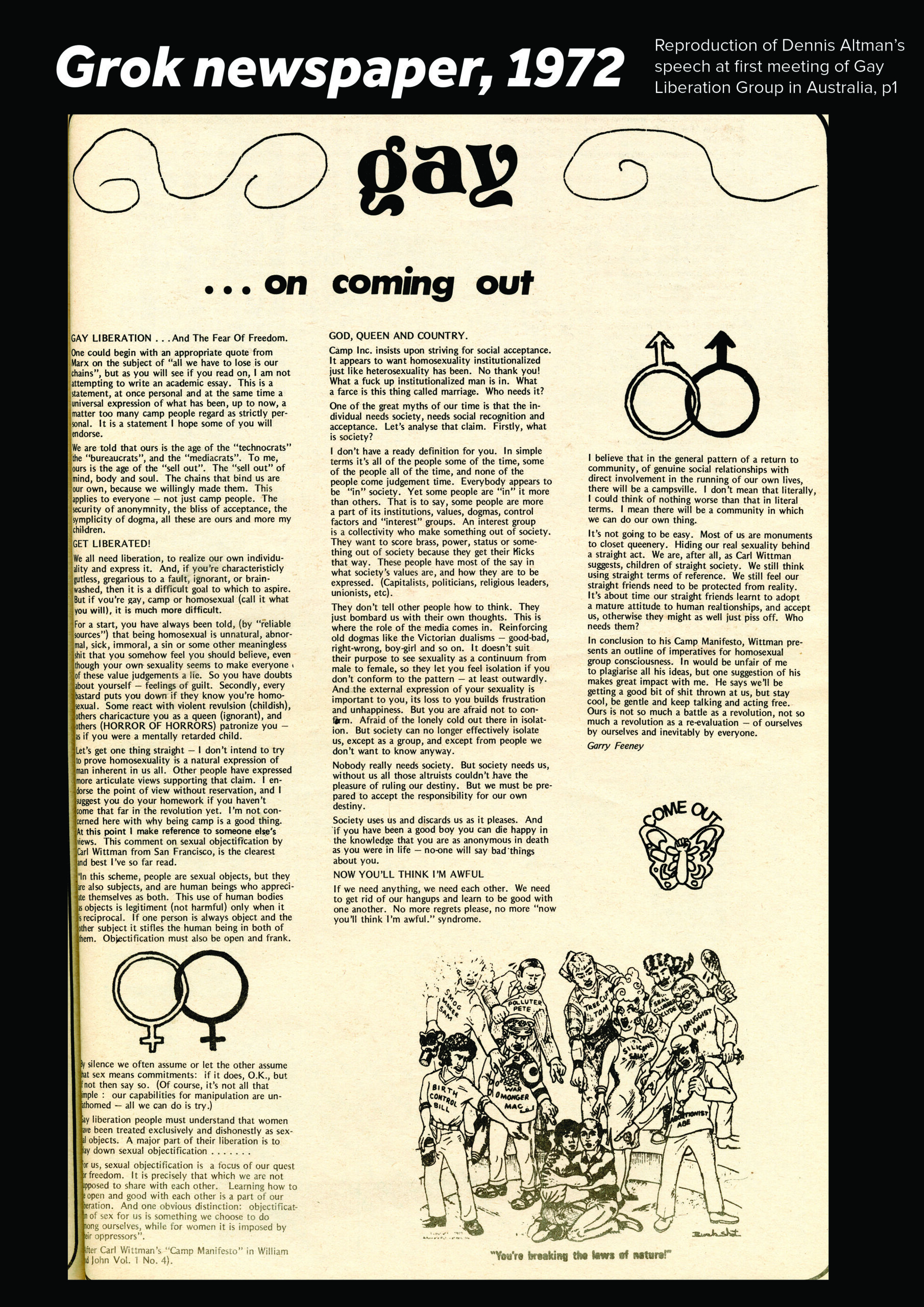
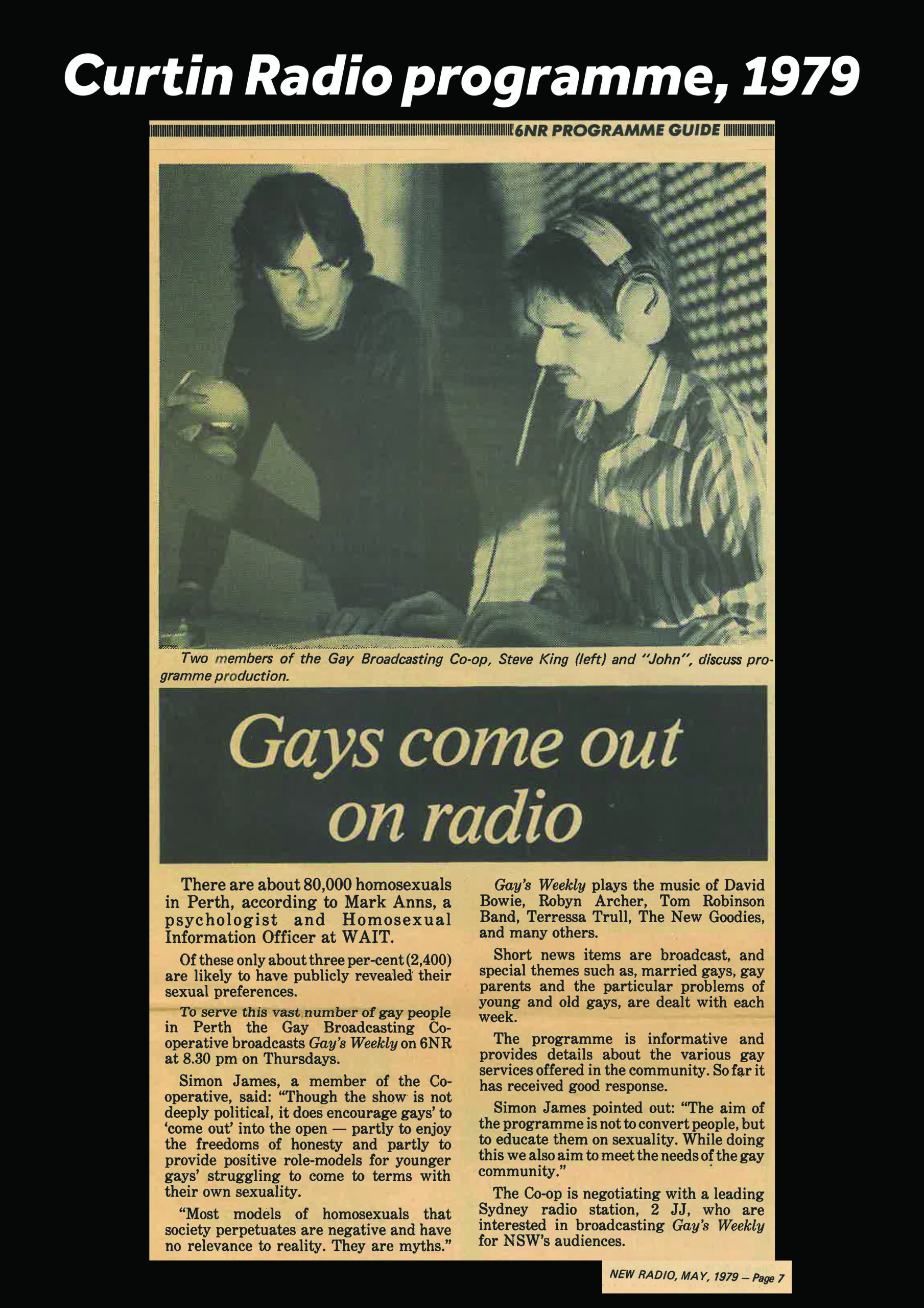
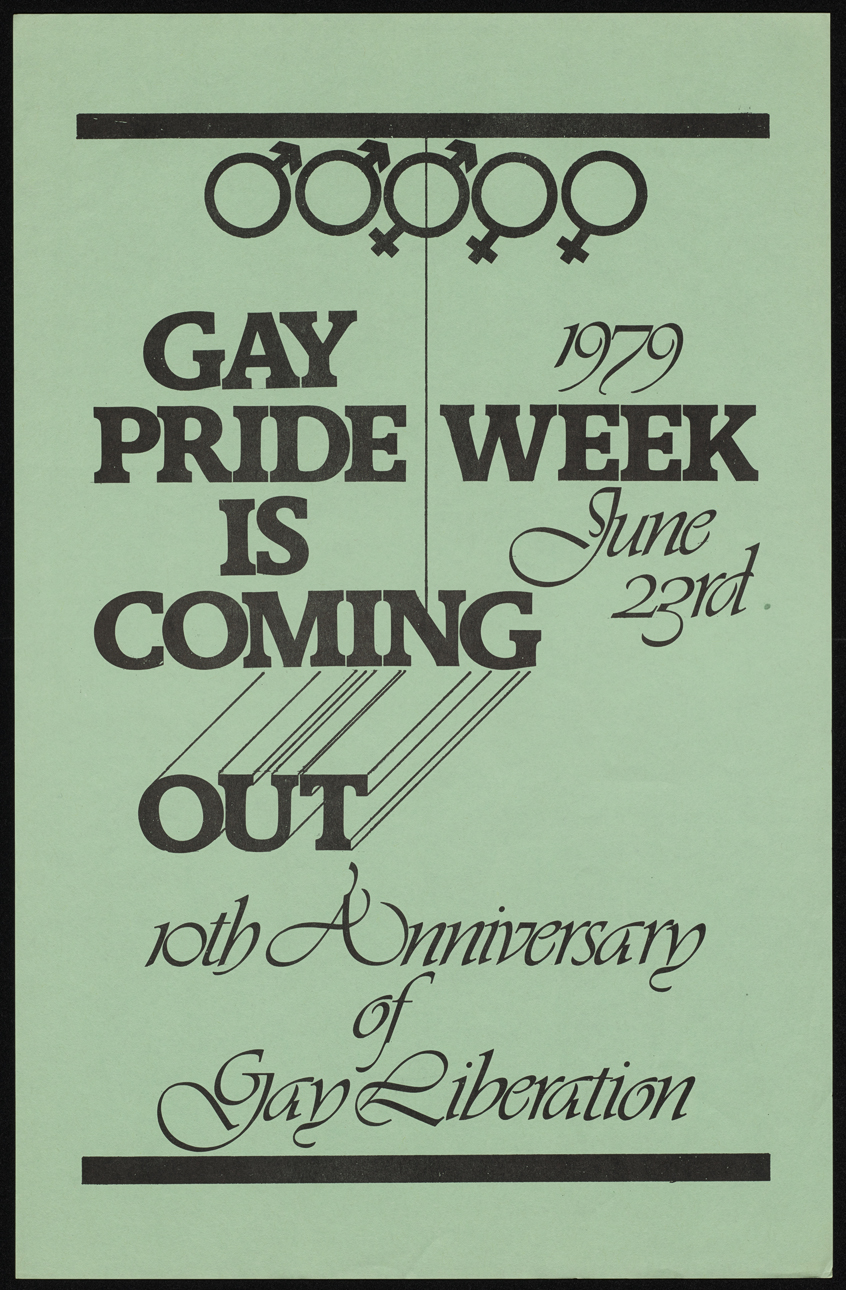
“10th Anniversary of Gay Liberation” appears to refer to the Stonewall riots that occurred in New York in June 1969. Though the Gay Liberation Movement had already began, this event is seen as a turning point in the Gay Liberation Movement occurring worldwide.
In 1979, the Student Guild created the Homosexual Information Office (HIO) as a department. The Guild recognised the responsibility to support all students in feeling welcome on campus, and to disseminate accurate information about sexuality and sexual orientation (Student Guild annual report, 1979).
Homosexuality was not decriminalised in Western Australia for another 10 years. It is significant that the Student Guild publicly showed their support for queer people during 1979-1989 despite the classification of homosexuality as a criminal activity in WA at the time, and alongside discrimination faced by homosexual people during the HIV/AIDS epidemic, officially declared in 1981.
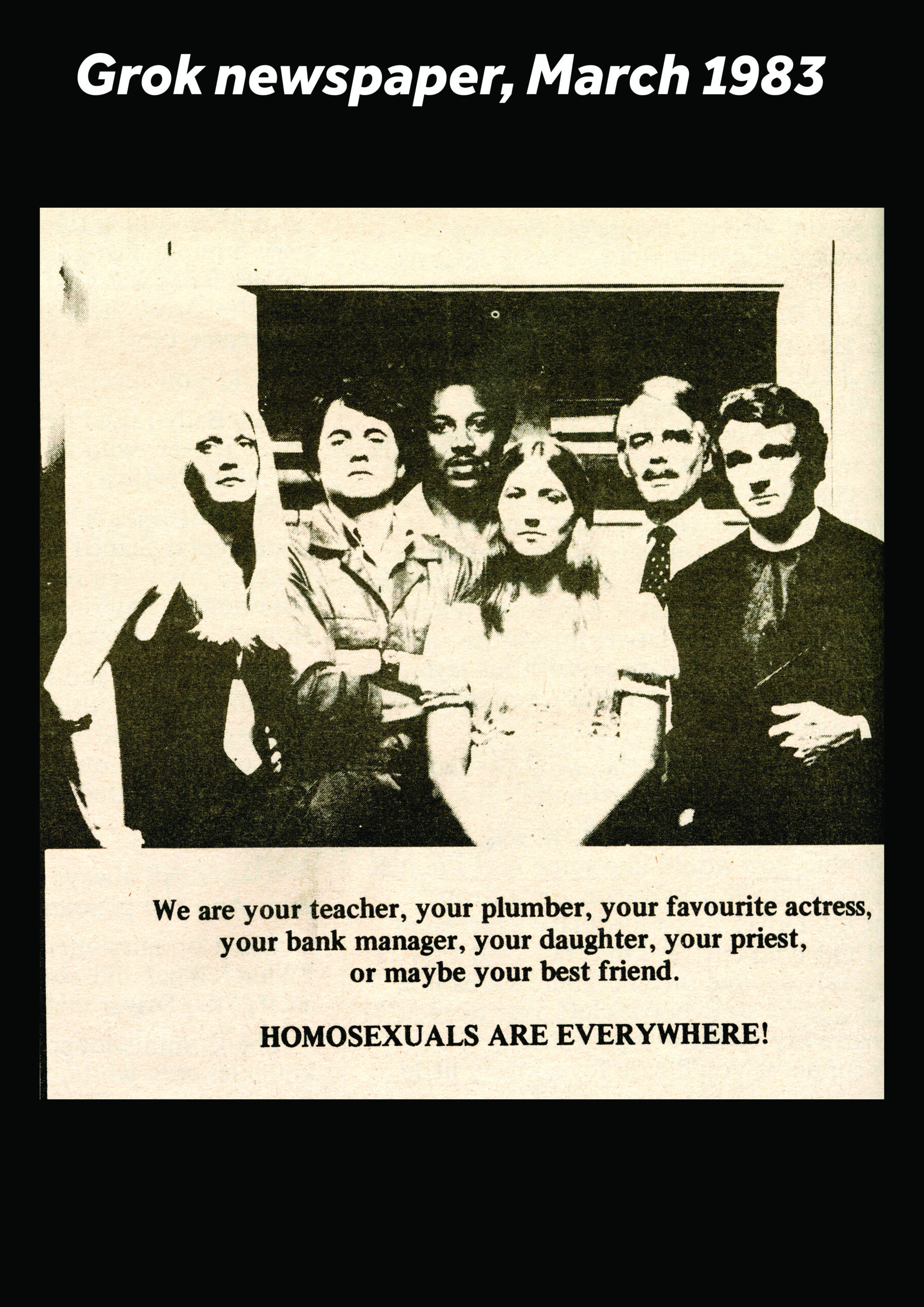
The Homosexual Information Office provided a safe space for queer students on campus to make friends, access support services, learn about sexuality, or just have a confidential chat with the Homosexual Information Officer. The HIO was open to both “gay and non-gay students alike”.
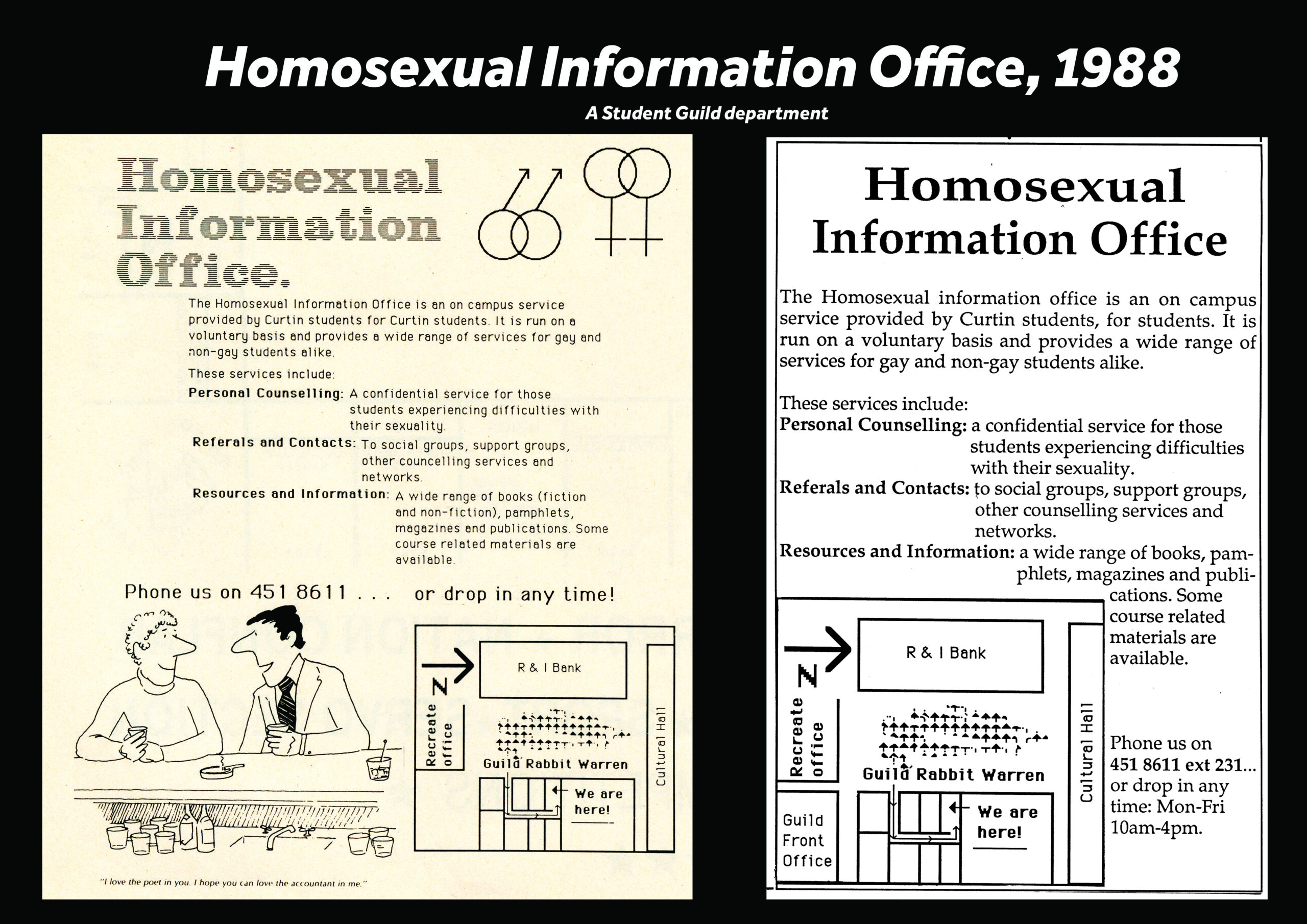
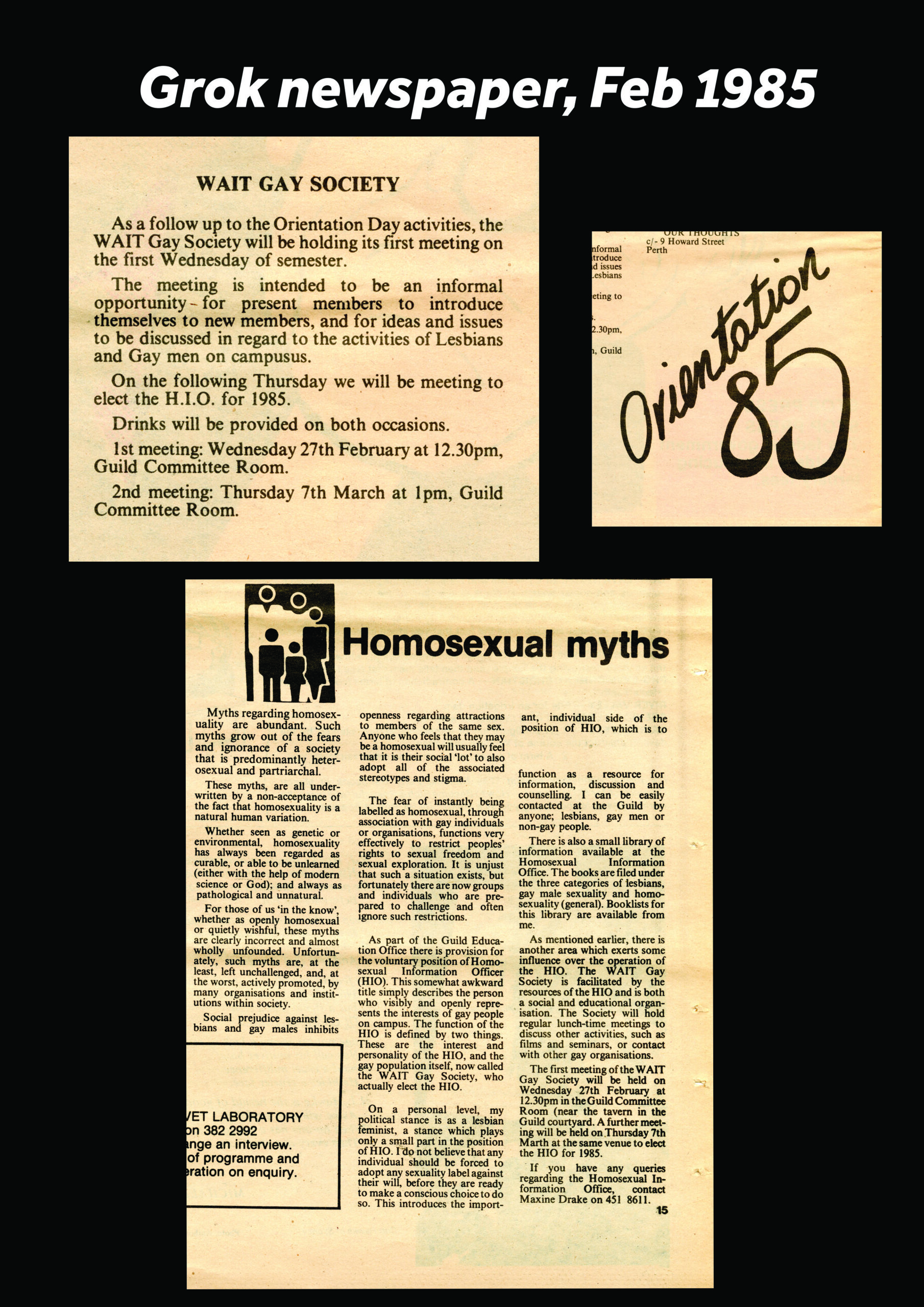
The poster below was on display at our Archives stall at the Campus Pride event, showing students and staff a few examples of the headlines of articles written by queer students in the GROK newspapers.
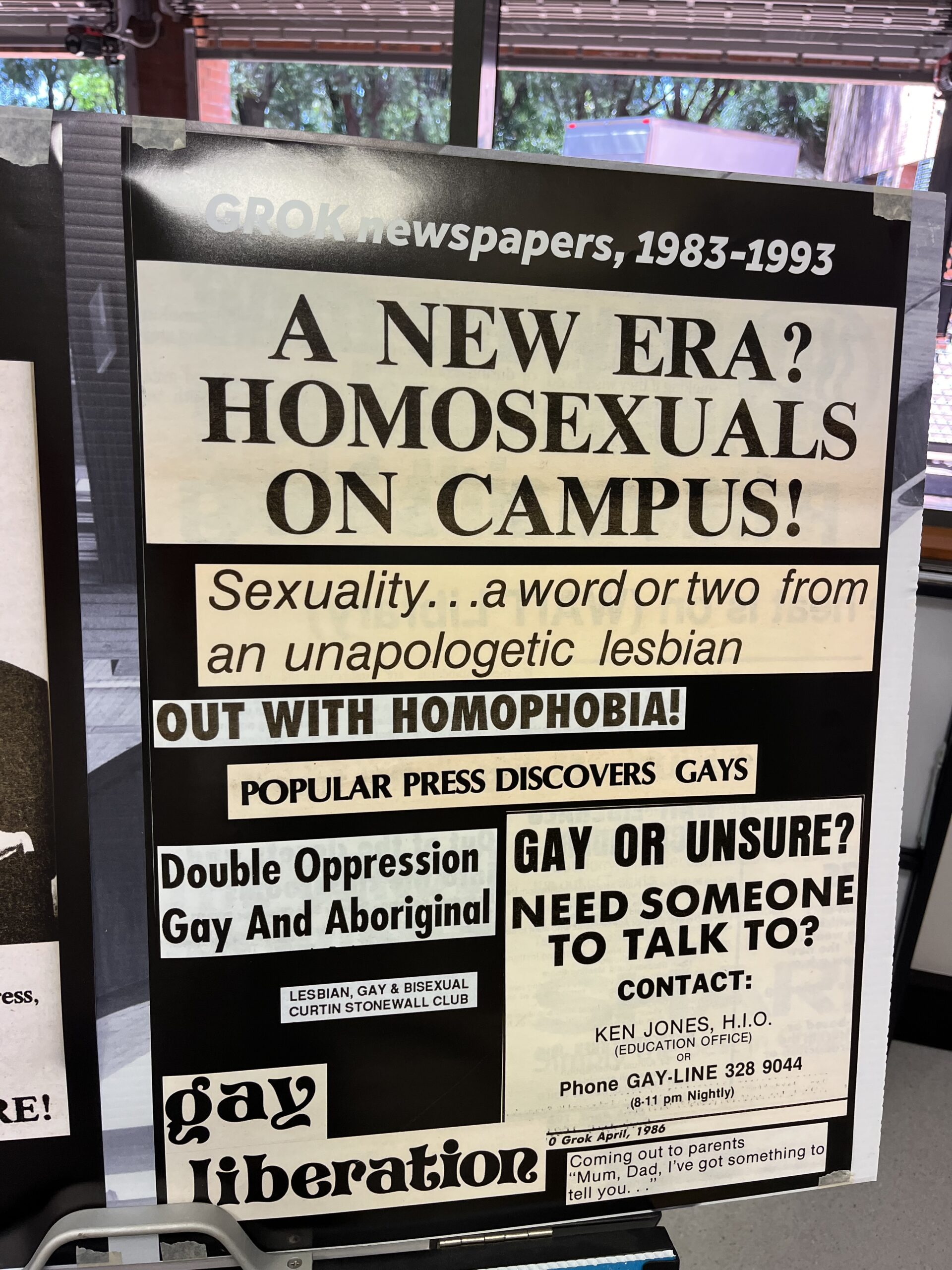
The developing mindsets and attitudes towards sex, sexual orientation and gender expression from the early 1970s to now have been very apparent during this project. The earlier records from the 70s and 80s show a binary way of thinking when it comes to sexual orientation and gender: heterosexual/homosexual and man/woman.
There is a gap in the records of that time when it comes to representation of people who do not fit within those two binaries. References to bisexuality, transgenderism, sex differences in humans and other sexualities are found in later records, ranging from the mid-90s to the late 2010s, depending on the topic.
The Equal Opportunity Act 1984 (WA) was amended in 2002 to include sexual orientation, legally protecting LGB people from discrimination in areas of employment and education in public life (Acts Amendment (Gay and Lesbian Law Reform) Act 2002).
In the early 2000s, Curtin appointed Michelle Rogers as Director of Support Services. With a background in social work she introduced the Ally Network at Curtin, and implemented awareness training for students and staff on issues facing LGBTQIA+ people (CITE magazine, Winter 2017).
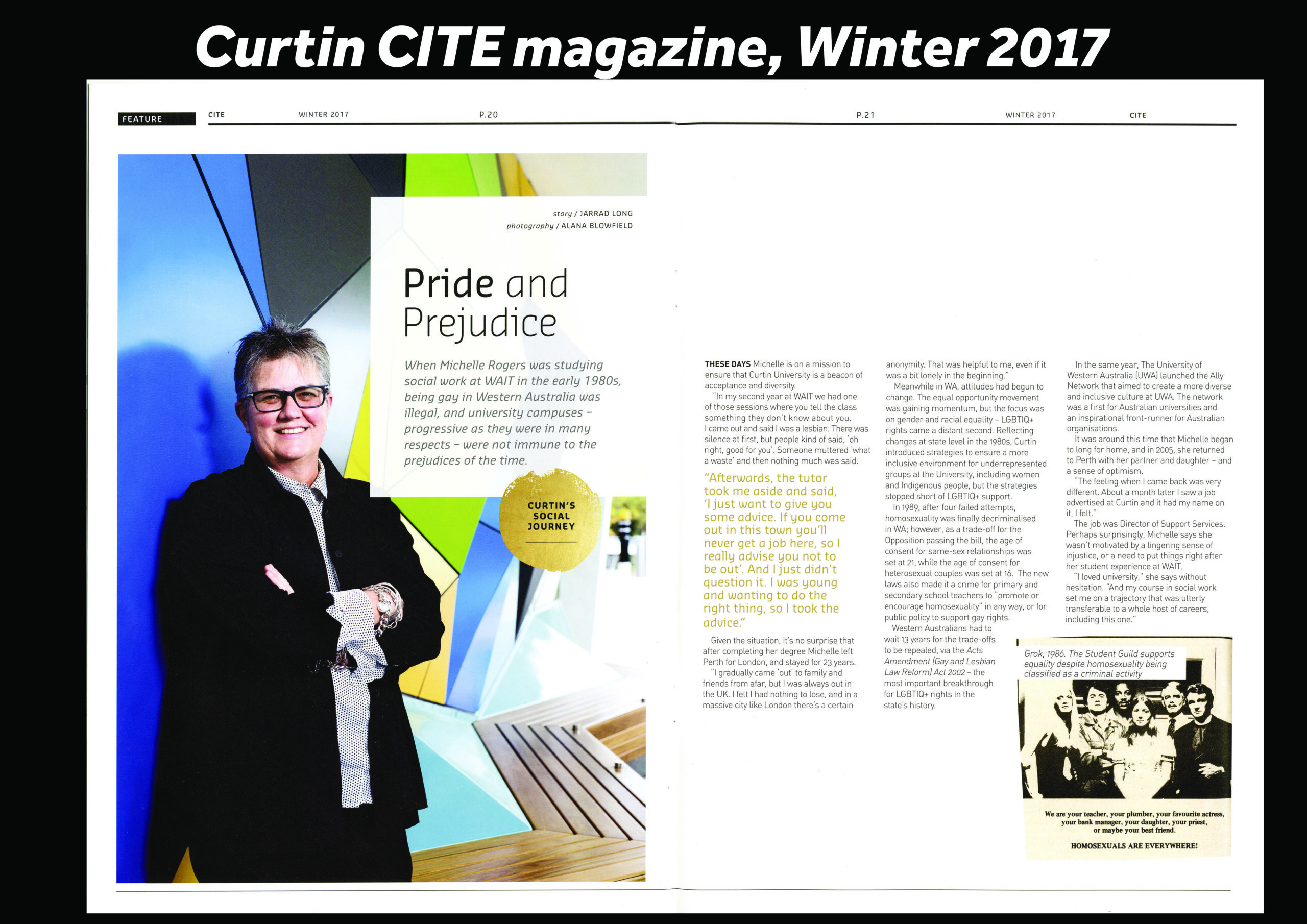
The work of Michelle Rogers as a member of the LGBTQIA+ community and WAIT alumni has had an ongoing impact for queer staff and students. The changes in the last 20 years have been significant at Curtin in its inclusivity. For three consecutive years 2013-5, the annual Pride in Diversity Awards named Curtin as the top Australian university for LGBTQIA+ inclusion (CITE magazine, Winter 2017).
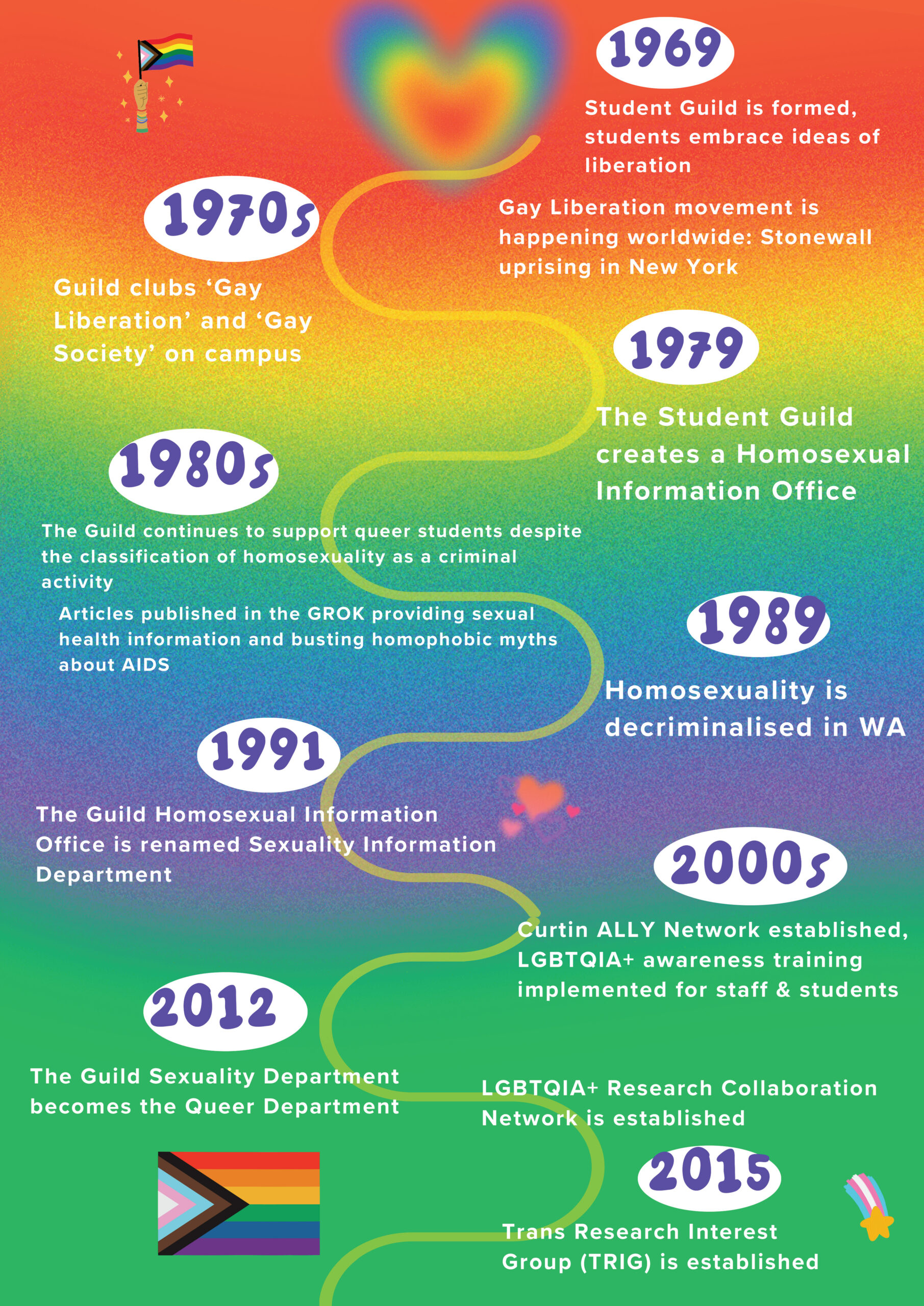
Recent records in the LGBTQIA+ archival collection relate to Curtin’s campaign supporting marriage equality in 2017.
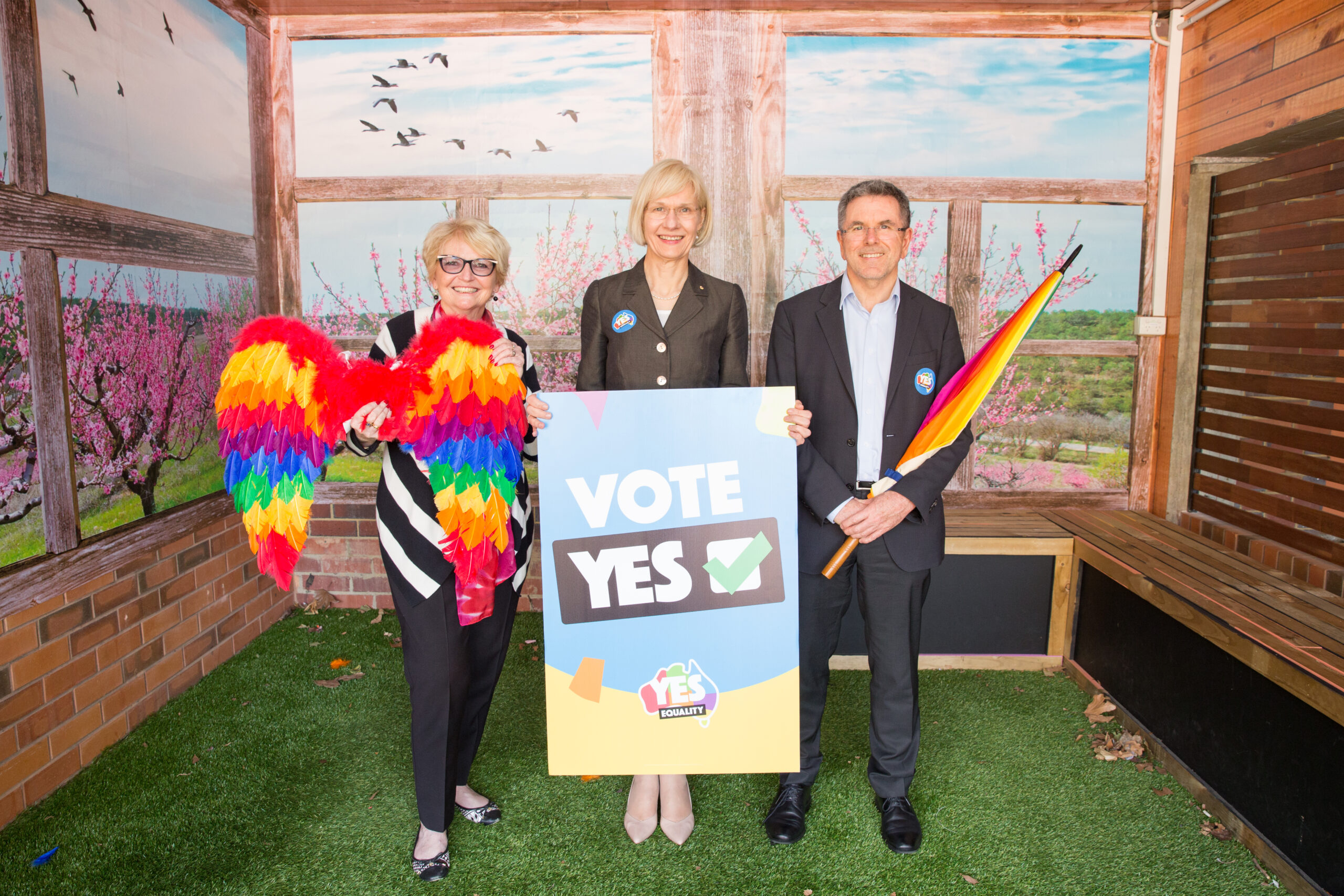
You are welcome to view the display cabinet on B100 Level 2 with some of the articles and items in this collection. It will be on display into November 2023. Many thanks to the Queer Department, Queer Collective members, and the Diversity, Inclusion and Belonging team at Curtin.
